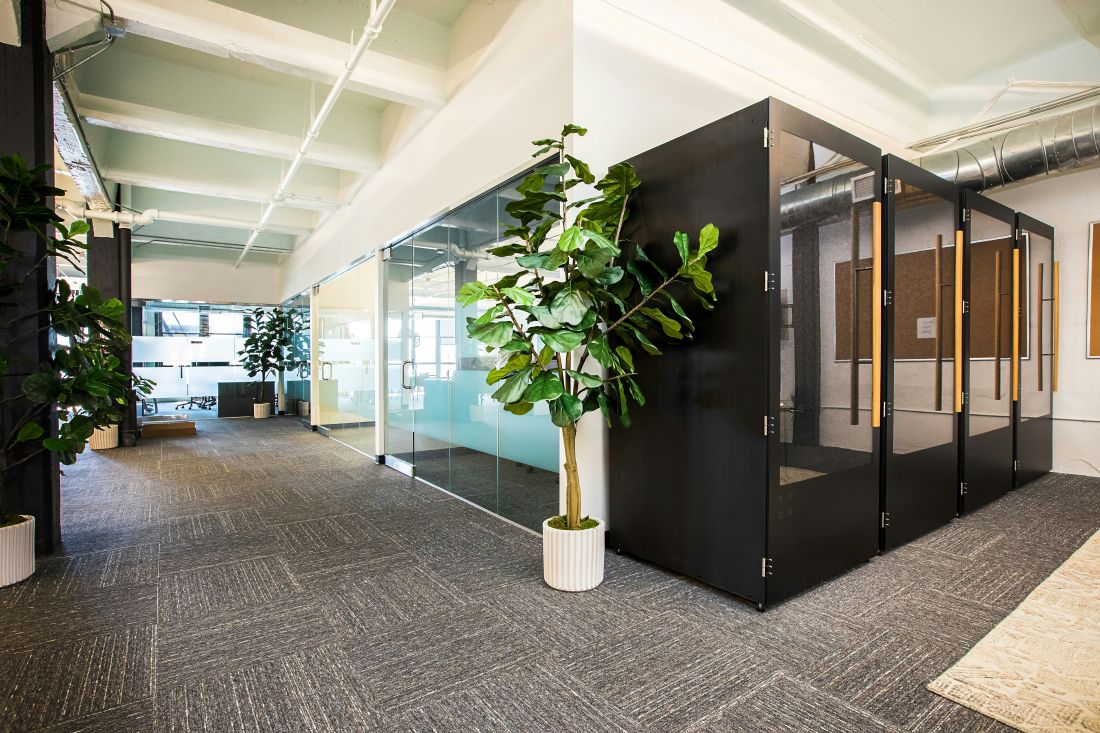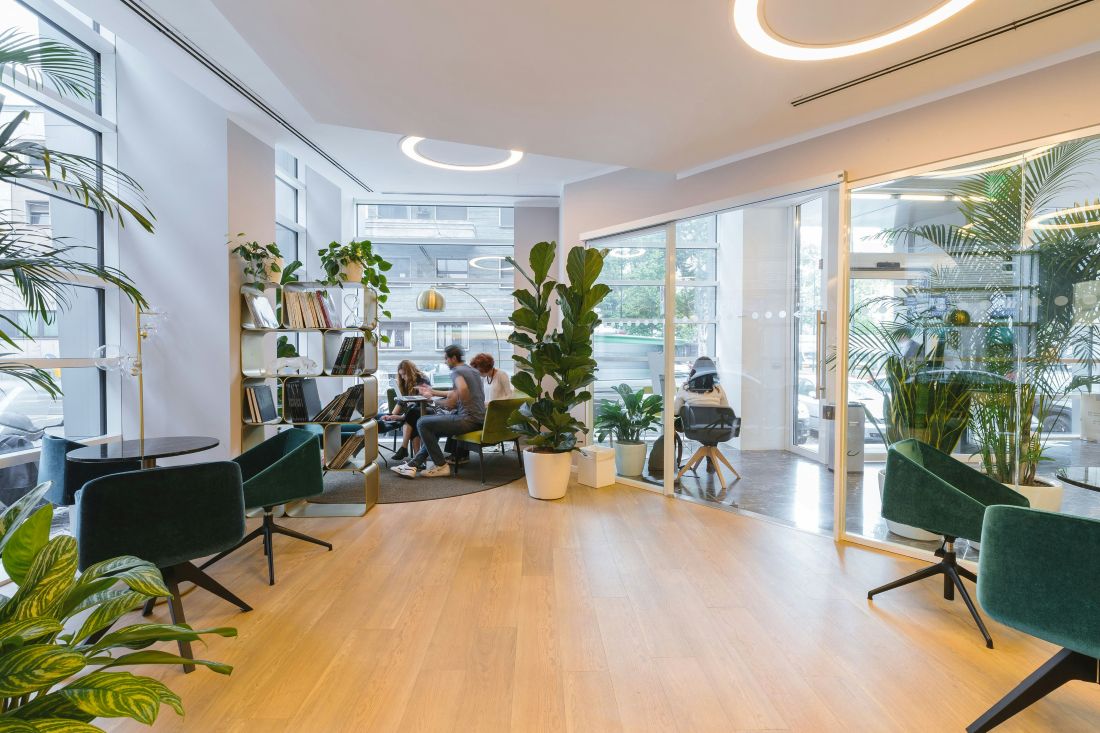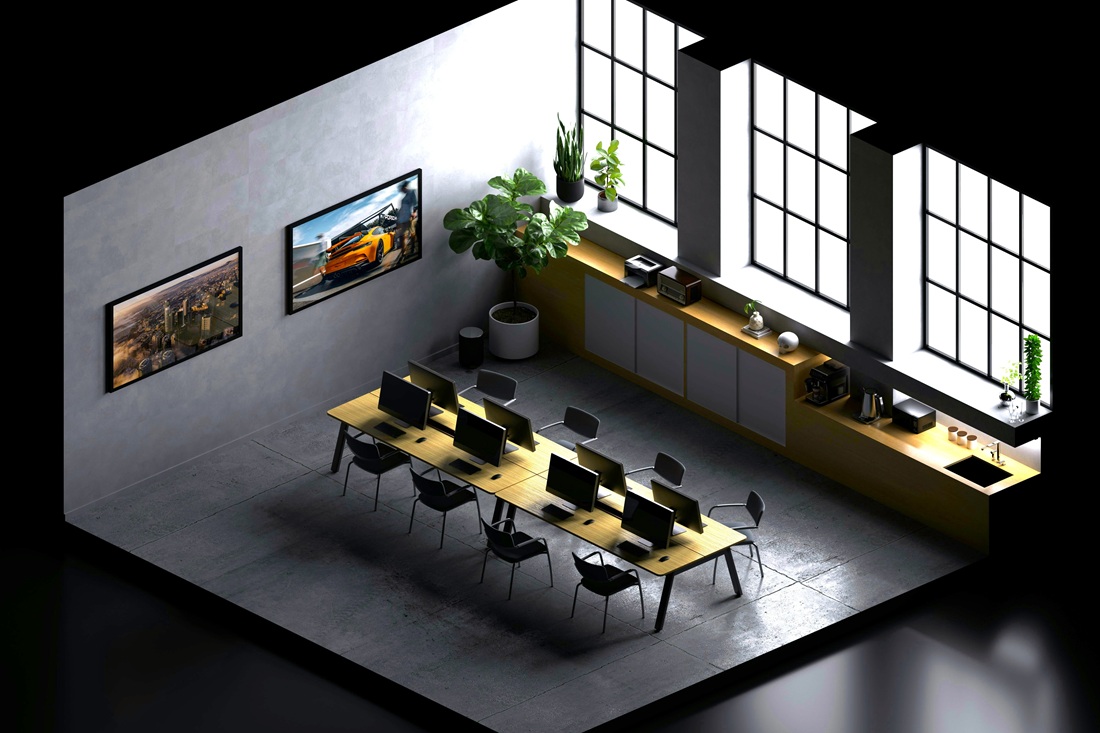Creating a smarter office is no longer just about style or preferences. Generative AI uses predictive modelling and real-life data to help businesses make smarter design choices. It considers how teams work and what they need in a workspace to improve productivity and comfort.
In this article, we explore how Generative AI can be used to design smarter, more efficient office space layouts.
Analyse Your Team’s Workspace Requirements
Before creating a new office layout, it’s essential to consider how your team operates. Generative AI makes this easier by analysing your workspace requirements, including:
• Team sizes and hybrid routines
AI tracks weekly attendance patterns and hybrid working habits to highlight peak congestion days and predict how many desks you actually need. This also helps companies determine what size office space they require.
• Meeting rooms and breakout areas
AI can also analyse call frequency, meeting length, and collaboration patterns to determine the right balance of private and shared space
For example, teams that have regular informal catch-ups and brainstorming sessions may benefit from more open breakout areas. Alternatively, firms that hold frequent client meetings, presentations and video conferences may require access to private meeting spaces or large boardrooms.

• Technology, accessibility needs and amenities
Clients we’ve worked with tell us that they also use AI to determine what technology they need and where to install it, based on footfall, noise, and layout. This can include microphones, interactive whiteboards, VC screens, AV equipment, Wi-Fi boosters, and smart sensors.
AI also considers accessibility, highlighting narrow walkways, blocked routes and mobility needs. This helps companies identify optimal locations for facilities such as kitchens, lockers, printers, and phone booths.

Plan Your Office Layout
After determining your requirements, Generative AI can instantly create multiple layout concepts, significantly reducing planning time.
AI can generate floor plans tailored to specific needs, workflows and departments. It can also test alternative layouts that fit different office floorplates. We’ve found this to be particularly useful for companies renting serviced offices in London, where building options vary significantly.

When planning a workspace layout, AI can also help optimise comfort and environmental conditions to maximise workplace productivity. It examines factors such as:
• Natural light patterns – many of our clients seek office spaces that feel bright and airy. AI can help businesses to arrange desks, meeting rooms and breakout areas to maximise the flow of natural light.

• Acoustics and background noise – AI can identify the sources of background sounds, echo-prone areas, and noise escaping from meeting rooms. This helps to protect confidential information and minimises distractions.
• Practical adjustments – as serviced offices typically don’t permit permanent structural changes, AI can also recommend temporary ways to create dedicated zones, enhance comfort and manage noise. This includes installing acoustic panels, adjustable lighting, soft furnishings, and movable partitions.
By utilising AI, businesses can create smarter workspaces that improve focus, reduce disruption, and enhance employee wellbeing and satisfaction.
Develop Fit-Out Options
Once the layout and environment have been optimised, generative AI can be used to explore a range of visual and functional options. This includes:
• Creating branded designs that align with your brand identity and culture
• Producing multiple colour schemes, allowing you to visualise options before committing
• Generating mood boards for different design styles and layouts
• Recommending furniture and placement based on usage, ergonomics, and environment
• Optimising material choices for cost-efficiency, sustainability and durability.

Serviced offices typically offer a plug-and-play setup, which is ideal for companies looking to move into a space quickly. However, they often come with predefined layouts and shared areas. In our experience, brand expression is usually achieved through temporary design touches such as artwork, plants, and soft furnishings.
In contrast, traditional leased and managed offices offer more creative freedom when customising a space.
Visualise Your Office Designs Using Walkthroughs
AI-generated walkthroughs allow businesses to preview their design concepts before committing. They enable companies to virtually explore their proposed office, helping them to get a feel of how the layout works.
This also shows how the concept will translate into real office floorplates, making it easier to compare different options without commissioning full designs.
Generative AI supports smarter decision-making by helping refine designs and layouts to create a workspace that functions effectively in person, not just on paper.
At FreeOfficeFinder we use our expertise to help firms interpret these walkthroughs and assess serviced office buildings more accurately, ensuring they rent an office space that best fits their needs.

Create a More Sustainable Workspace
Generative AI supports sustainability throughout the design process. These tools help to:
• Evaluate the environmental impact of materials and suggest alternatives that balance sustainability with cost and durability. This includes comparing options such as recycled flooring, low-VOC paints, and long-lasting furniture that help limit emissions and waste.

• Model energy consumption by predicting how lighting, heating, and cooling systems will perform, identifying where usage is highest and where running costs can be reduced.
• Minimise waste during fit-out using calculations to determine material quantity requirements, cutting down on off-cuts and over-ordering to lower costs and environmental impact.
• Meet ESG targets by recommending design choices which support sustainability commitments, helping businesses demonstrate corporate responsibility to clients and investors.
We’ve seen a growing interest in ESG-compliant spaces, particularly across the London serviced office market. AI helps businesses design smarter, sustainable workspaces, strengthening their brand reputation and credibility.
Analyse Workspace Usage to Shape Future Redesigns
Smart office designs continue to evolve even after moving in. Generative AI tools analyse real usage data to show how your team engages with the space over time and can provide insights into:
• Movement patterns
• Underused or overused areas
• Collaboration hotspots
• Actual desk and meeting room demand
This ongoing feedback encourages companies to keep improving the office space over time, making it smarter, more efficient and better aligned with their team’s changing needs and habits.

Generative AI removes uncertainty and guesswork, helping companies make informed decisions to design office spaces shaped by real needs and usage. It enhances everything from spatial planning and comfort to sustainability strategies and future refinements.
Clients tell us that AI has helped make the design process quicker, more accurate and more cost-effective. It also helps them to feel more confident when choosing an office space to rent, as they know their decision is backed by real data.






